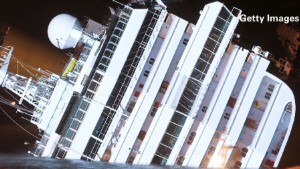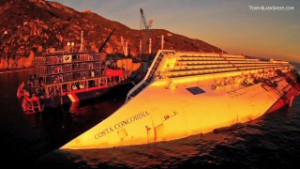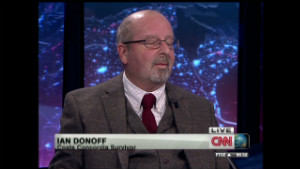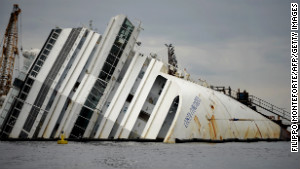A history of the country’s struggle with alcoholism, and why the government has done so little about it.
Picture the Russian alcoholic: nose rosy, face unshaven, a bottle of
vodka firmly grasped in his hands. By his side he has a half-empty jar
of pickles and a loaf of rye bread to help the devilish substance go
down. The man is singing happily from alcohol-induced jubilation. His
world may not be perfect, but the inebriation makes it seem that way.
Today, according to the World Health Organization, one in five men in
the Russia Federation die due to alcohol-related causes, compared with
6.2 percent of all men globally. In 2000, in her article “First Steps:
AA and Alcoholism in Russia,” Patricia Critchlow estimated that some 20 million Russians are alcoholics in a nation of just 144 million.
“After each drastically stepped-up
anti-alcohol campaign, [Russian] society found itself faced with an even
greater spread of drunkenness and alcoholism."
The Russian alcoholic was an enduring fixture during the Tsarist
times, during the times of the Russian Revolution, the times of the
Soviet Union, during the transition from socialist autocracy to
capitalist democracy, and he continues to exist in Russian society
today. He sits on broken park benches or train station steps with a
cigarette drooping out of his mouth, thinking about where his next drink
will come from and whether he can afford it.
The Russian government has repeatedly tried to combat the problem,
but to little avail: this includes four reforms prior to 1917, and
larger scale measures taken during the Soviet period in 1958, 1972, and
1985. “After each drastically stepped-up anti-alcohol campaign,
[Russian] society found itself faced with an even greater spread of
drunkenness and alcoholism,” explains G.G. Zaigraev, professor of
Sociological Sciences and Head Science Associate of the Institute of
Sociology at the Russian Academy of Sciences. The Kremlin’s own
addiction to liquor revenues has overturned many efforts to wean
Russians from the snifter: Ivan the Terrible encouraged his subjects to
drink their last kopecks away in state-owned taverns to help pad the
emperor’s purse. Before Mikhail Gorbachev rose to power in the 1980s,
Soviet leaders welcomed alcohol sales as a source of state revenue and
did not view heavy drinking as a significant social problem. In 2010,
Russia’s finance minister, Aleksei L. Kudrin, explained that
the best thing Russians can do to help, “the country’s flaccid national
economy was to smoke and drink more, thereby paying more in taxes.”
By facilitating alcohol sales and distribution, the Kremlin has
historically had considerable sway in recent decades. But Russia’s
history with alcohol goes back centuries.
In the year 988, Prince Vladimir decided to convert his nation to
Orthodox Christianity, partly because it allowed the consumption of
alcohol. According to legend, monks at the Chudov Monastery in the
Kremlin were the first to lay their lips on vodka in the late 15th
century, but as Russian writer, Victor Erofeyev
notes, “Almost everything about this story seems overly symbolic: the
involvement of men of God, the name of the monastery, which no longer
exists (
chudov means “miraculous”), and its setting in the
Russian capital.” In 1223, when the Russian army suffered a devastating
defeat against the invading Mongols and Tartars, it was partly because
they had gone into battle drunk.
Ivan the Terrible established
kabaks
(establishments where spirits were produced and sold) in the 1540s, and
in the 1640s they had become monopolies. In 1648, tavern revolts broke
out across the country, by which time a third of the male population was
in debt to the taverns. In the 1700s, to regain order, Peter the Great
monopolized the vodka industry and used his subjects’ alcoholism for
personal gain. As Heidi Brown, who spent 10 years covering Russia for
Forbes magazine, explained
,
“[Peter the Great] decreed that the wives of peasants should be whipped
if they dared attempt to drag their imbibing husbands out of taverns
before the men were ready to leave.”
Peter the Great also found a steady supply of free labor by allowing
those who had drunk themselves into debt to stay out of debtors prison
by serving 25 years in the army.
Widespread and excessive alcohol consumption was not only tolerated,
but encouraged as a way of generating revenue. By the 1850s, nearly half
the tsarist government’s tax revenues came from vodka sales. Following
the Russian Revolution in 1917, Lenin banned vodka. After his death,
however, Stalin used vodka sales to help pay for the socialist
industrialization of the Soviet Union. By the 1970s,
receipts from alcohol again constituted a third of government revenues.
One study found that alcohol consumption more than doubled between 1955
and 1979, to 15.2 liters per person.
It has been argued that heavy consumption of alcohol was also used as
a means of reducing political dissent and as a form of political
suppression. Russian historian and dissident Zhores Medvedev argued
in 1996, “This ‘opium for the masses’ [vodka] perhaps explains how
Russian state property could be redistributed and state enterprises
transferred into private ownership so rapidly without invoking any
serious social unrest.” Vodka, always a moneymaker in Russia, may have
been a regime-maker as well.
***
To date, there have been only two expansive anti-alcohol campaigns in
Russia, both of which took place during the Soviet Union: one under
Vladimir Lenin and the other under Mikhail Gorbachev. All other leaders
have either brushed alcoholism under the carpet or acknowledged heavy
alcohol consumption but did nothing substantial about it. As Critchlow
wrote, “Under the Stalin, Khrushchev, and Brezhnev regimes, harsh
penalties were imposed on those who committed crimes while intoxicated,
but heavy drinking was not viewed as a threat to society, perhaps
because the leaders, who themselves liked to indulge, saw the use of
alcohol as a safety valve for low morale.”
In May 1985, Gorbachev announced legislation and a large-scale media
campaign as part of the Kremlin’s new war on alcoholism—then the
U.S.S.R.’s number one social problem and the third most common ailment
after heart disease and cancer. It was largely seen as the most
determined and effective plan to date: the birthrate rose, life
expectancy increased, wives started seeing their husbands more, and work
productivity improved. However, after a spike in alcohol prices and a
decrease in state alcohol production, some started hoarding sugar to
make moonshine, and others poisoned themselves with dangerous
intoxicants such as antifreeze. The people’s displeasure with
Gorbachev’s anti-alcohol campaign can be summarized by an old Soviet
joke: “There was this long line for vodka, and one poor guy couldn’t
stand it any longer: ‘I’m going to the Kremlin, to kill Gorbachev,’ he
said. An hour later, he came back. The line was still there, and
everyone asked him, ‘Did you kill him?’ ‘Kill him?!’ he responded. ‘The
line for that’s even longer than this one!’”
Despite Gorbachev’s efforts, by the end of the Soviet era,
alcoholism still had a stronghold in Russia. Its success ultimately lead
to its failure: spending on alcohol from state outlets fell by billions
of rubles between 1985 and 1987. Authorities expected that the loss in
revenue would be more than offset by a predicted 10 percent rise in
overall productivity, but such predictions were ultimately not met.
Following the fall of the Soviet Union, the state’s monopoly over
alcohol was repealed in 1992, which lead to an exponential increase in
alcohol supply. In 1993, alcohol consumption had reached 14.5 liters of
pure alcohol per person, making Russia one of the largest consumers of
alcohol in the world. To date, taxation on alcohol remains low, with the
cheapest bottles of vodka costing just 30 rubles ($1) each. As Tom Parfitt explained in the
Lancet
in 2006, “There is a simple answer to why so many Russians fall prey to
alcohol…it’s cheap. Between 30-60% of alcohol is clandestinely made,
and therefore untaxed. A large quantity is run off on ‘night shifts’ at
licensed factories where state inspectors are bribed to remove tags on
production lines at the end of the working day.”
Vladimir Putin has criticized excessive drinking, and Dmitri Medvedev has called Russia’s alcoholism a “natural disaster,”
but besides the rhetoric, little has been done to tighten regulations
on the manufacture of liquor, and no coherent programs have been
implemented to combat alcoholism. Gennady Onishchenko, Chief Public
Health Inspector of the Russian Federation, has urged major spending on
the treatment of alcoholism as a response to the tripling of
alcohol-related mortality since 1990, arguing that prohibition and
excise tax hikes are counterproductive.
Today, the dominant mode of treatment for alcoholism in Russia is a
suggestion-based method developed by narcology (the subspecialty of
Russian psychiatry that deals with addiction). Narcology, otherwise
referred to as ‘coding’, is a procedure intended to provoke a
subconscious aversion to alcohol.
“While many aspects of addiction treatment in Russia had been
radically transformed during the 1990s, the overall structure of the
state-funded network had not changed significantly since the 1970s, when
the Soviet narcological system was established,” wrote
Eugene Raikhel of the University of Chicago. Other, less common methods
that have been used to treat alcohol and drug addiction include brain
“surgery” with a needle and “boiling” patients by raising their body
temperatures, which is intended to ease severe withdrawal symptoms.
Conventional treatments for alcoholism, such as Alcoholics Anonymous,
are available in Russia, but they are not officially recognized by the
Kremlin and do not receive government funds, making them scarce and very
poorly funded.
The Russian Orthodox Church has met self-help programs with suspicion
as well. Critchlow explained, “Despite their record of success with
many alcoholics and drug addicts, the self-help programs Alcoholics
Anonymous and Narcotics Anonymous . . . have [been] met with resistance
in Russia, especially from the medical profession, government officials,
and the Russian Orthodox Church clergy.” She further wrote, “Members of
the Russian Orthodox clergy have expressed distrust of the self-help
movement, often because of the perception of it as a religious cult
invading the country.”
In 2010, the Church described AA as an "effective instrument in rehabilitating drug and alcohol addicts,” while saying it would develop its own alcohol program.
Meanwhile, many Russians still prefer more traditional remedies. "I
went to the AA and I couldn't believe my ears. They have no God and they
say that they conquer alcoholism themselves. That fills them with
pride," one Orthodox believer wrote on his blog. "I went back to the Church. There, they conquer it with prayer and fasting.”
 Philip Seymour Hoffman, the Oscar-winning actor who played everything
from a maverick CIA agent to a drag queen to a Catholic priest, has
died. He was 46.
Philip Seymour Hoffman, the Oscar-winning actor who played everything
from a maverick CIA agent to a drag queen to a Catholic priest, has
died. He was 46.








 6. It has some 3D tricks up its sleeve.
One of the coolest features is one of the most subtle: the icons on the
screen "float" over the background. In other words, when you move the
phone the icons move around to reveal parts of the wallpaper underneath.
It's a very cute feature that lets you see more of your favorite photos
and offers a much cleaner view of the interface.
6. It has some 3D tricks up its sleeve.
One of the coolest features is one of the most subtle: the icons on the
screen "float" over the background. In other words, when you move the
phone the icons move around to reveal parts of the wallpaper underneath.
It's a very cute feature that lets you see more of your favorite photos
and offers a much cleaner view of the interface.






















